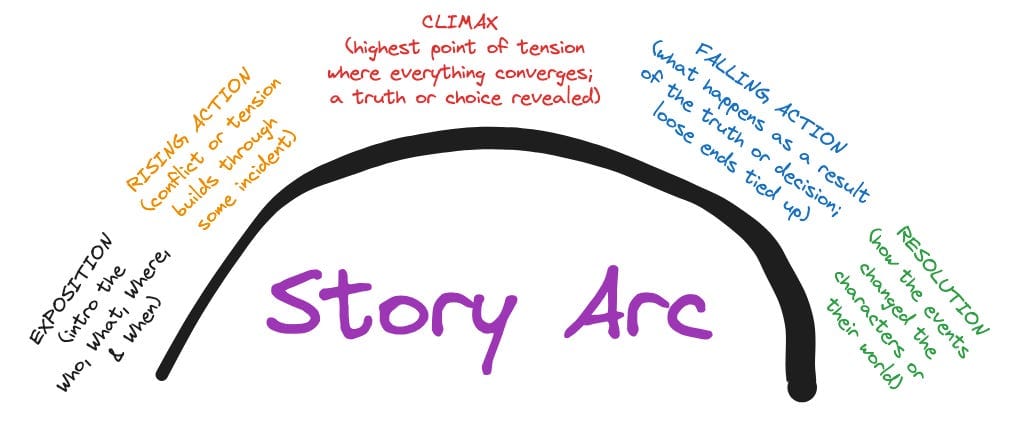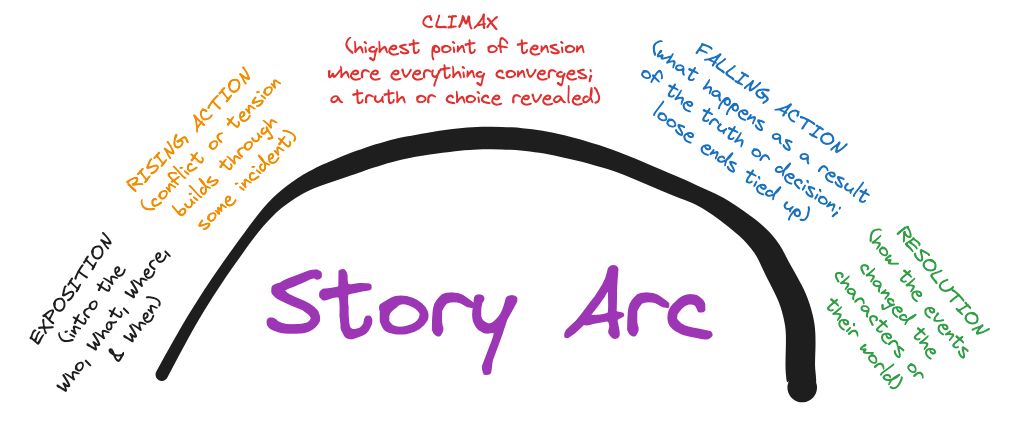Tell Stories to Generate Action
How storytelling can influence the everyday.

One of my readers, Sherry, asked me recently, “How do I tell stories to influence people?’ As a highly skilled internal agile coach, Sherry’s influence in her technology organization grew. She helped connect engineering, product management, and customer support so they worked more effectively together.
However, the company grew quickly which meant new staff and new leadership joining. These new staff arrived with their own experience and opinions on what works best in a technology organization. Sherry needed to balance the new ways of thinking with the ways that made her organization — and her —- successful.
Sherry wanted to influence these new people but also needed to understand their stories to find out what worked for the new staff in the past and why. She needed to practice her listening and be clear on the path she needed to set for the organization. Sherry needed to collect and tell stories of the veteran staff and the new staff so their stories started to blend into new stories for the organization.
Why Stories for Influence?
We learn through stories. We want to know “Who did something like this?” Or we might be curious why a particular person showed up unexpectedly at an event. You might have heard in casual conversations:
Friend: “Did you hear Taylor Swift showed up at some football games and what that did to drive ticket sales?”
You: “No, tell me about it!”
We also connect through stories. Sometimes who tells the story can be as important as the story itself. Will you believe a story from a close friend? Will you listen carefully to a story from a trusted coworker? Will you listen to a story from someone who others have told you how great they are? And “great” can be replaced with: experienced, skillful, funny, or just a great storyteller.
So in order to connect and help people learn, you need to consider:
- Who is the story for?
- What is the point of the story?
- What do they need to understand in the story?
- How can you shape the story for them to help them understand?
Who Is the Story For?
In the beginning of this article, I shared a story about Sherry. Who is this story for? Other people who are like Sherry! They either could be current agile coaches, or organizational leaders, or someone trying to take on this kind of role.
We connect better to the story when we feel this could be someone like us. To be honest, I did not talk to a “Sherry.” However, I did talk to someone in a very similar role recently who I mentor from time to time. She actually asked me how to tell stories to influence.
When I get a question like this, I start to ask myself:
- “Who else might need an answer to this question?”
- “How is their world similar to others? How is it different?” (That becomes “Sherry” and her world.)
- “What does the read need to know about Sherry to feel they are like Sherry?”
But what is the point of thinking through these questions?
What’s the Point of the Story?
You could say “storytelling for influence” forms the main point of the story, but it’s more subtle. In my experience, effective agile coaches tend to be empathetic leaders who provide options over directives. They try to create inclusive environments and listen for the stories of others as well as share their own stories. They seek out the lessons in the stories gathered and look for similarities and differences to understand where the people and the organization has been and where it’s going.
These empathetic leaders become tribal story tellers. Because they faithfully share the stories of others and help people understand the lesson, they help the organization learn together and create new stories to share. That was the point of that short three paragraph story.
Did that point come across? If you retold that story, would you tell it differently to make that point? Did you feel Sherry’s challenge?
What Do They Need To Understand in the Story?
Most stories follow some form of narrative arc which is also know as a story arc. As shown in the figure below, there are usually distinct points to the narrative arc:
- Exposition - The introduction to the characters, their environment, and their situation.
- Rising Action - Building of conflict or tension usually through some event or collection of events.
- Climax - The tension converges and all the threads of the story are brought together. Usually a truth is revealed or the main characters make a choice.
- Falling Action - What happens as a result of the truth being revealed or the consequences of the decision made by the characters. Any loose ends are tied up by explanation of what was previously hidden.
- Resolution - How the events changed the characters or the world around them. Not always a happy ending.

Note in the story at the top of the article, I only covered the exposition (Sherry as a successful internal agile leader) and the rising action (she had a rapidly growing company with new people bringing new ideas and opinions). Sometimes you don’t have to tell the entire story to get people interested, but it is a good idea to tell them the whole story. Otherwise, they may leave your story feeling confused or upset at not finding the resolution.
I’m hoping that the person who asked me the original question will finish writing that story and share it in the future.
However, I cannot leave you without a complete example. So look on my blog for How to Handle a Challenging Audience (A Lesson in Story Telling) to read a complete story arc for a short story. In that story, it doesn’t have the ending you might expect, but it does have a message of hope for those who teach and speak to difficult crowds. I also hint at a similar story that might have another lesson.
Where’s the Action (and influence) from the Story?
When people hear your stories, do they see themselves in the story? If they do, can you provide them with some options and outcomes through the story that give them new ideas? Those ideas spark action.
As a well known agile coach (named III) once said, “I just open the door. You own the walking through.”
Sometimes you need to give them a bit more detail to shape the story and let them find that door. I’ll save that for another time.
Hope this helps,

P.S. If you search online for “story arc”, you will find there are many variations on the original arc. If you really want to geek out on story arcs, this was a fascinating description with many examples: How to Shape a Story: The 6 Types of Story Arcs for Powerful Narratives.
P.P.S. Sometimes we need to be clear on the stories we tell ourselves to motivate ourselves to the right action. Personal Kanban provides an approach to build your own stories for action. I have a course starting November 1 which you can learn more about here.
